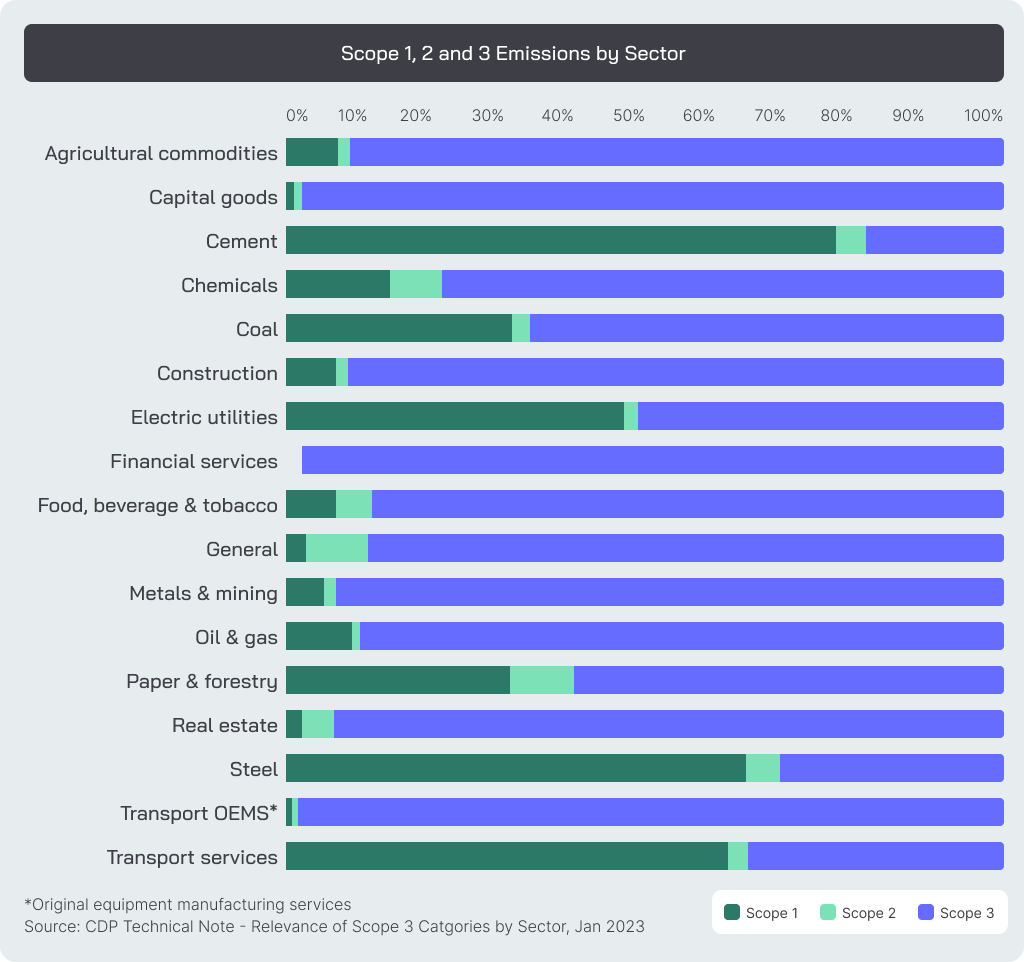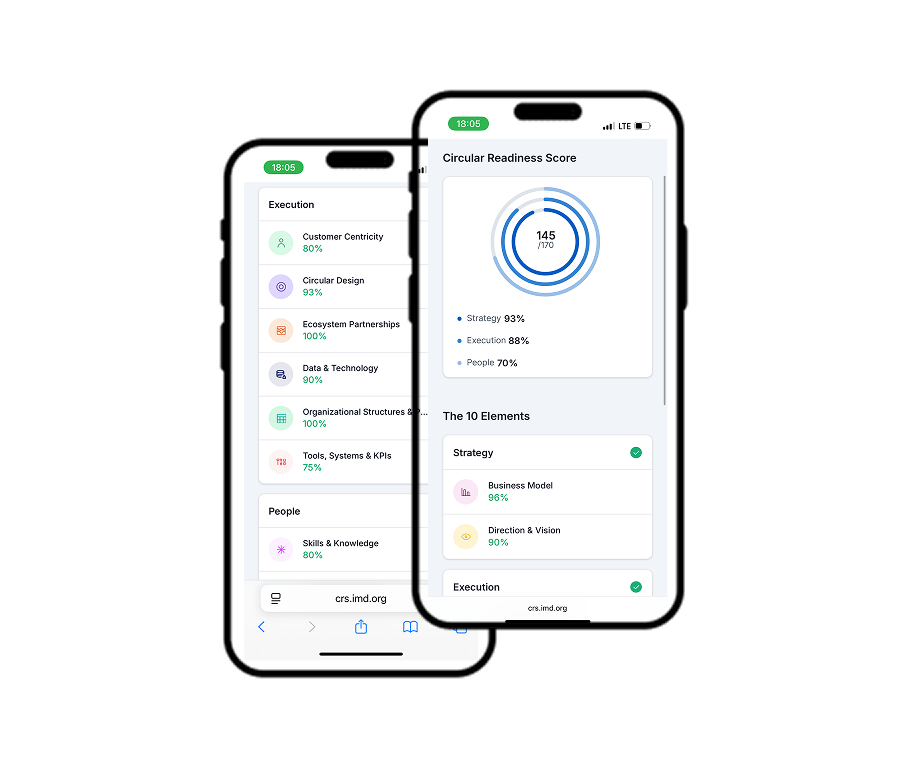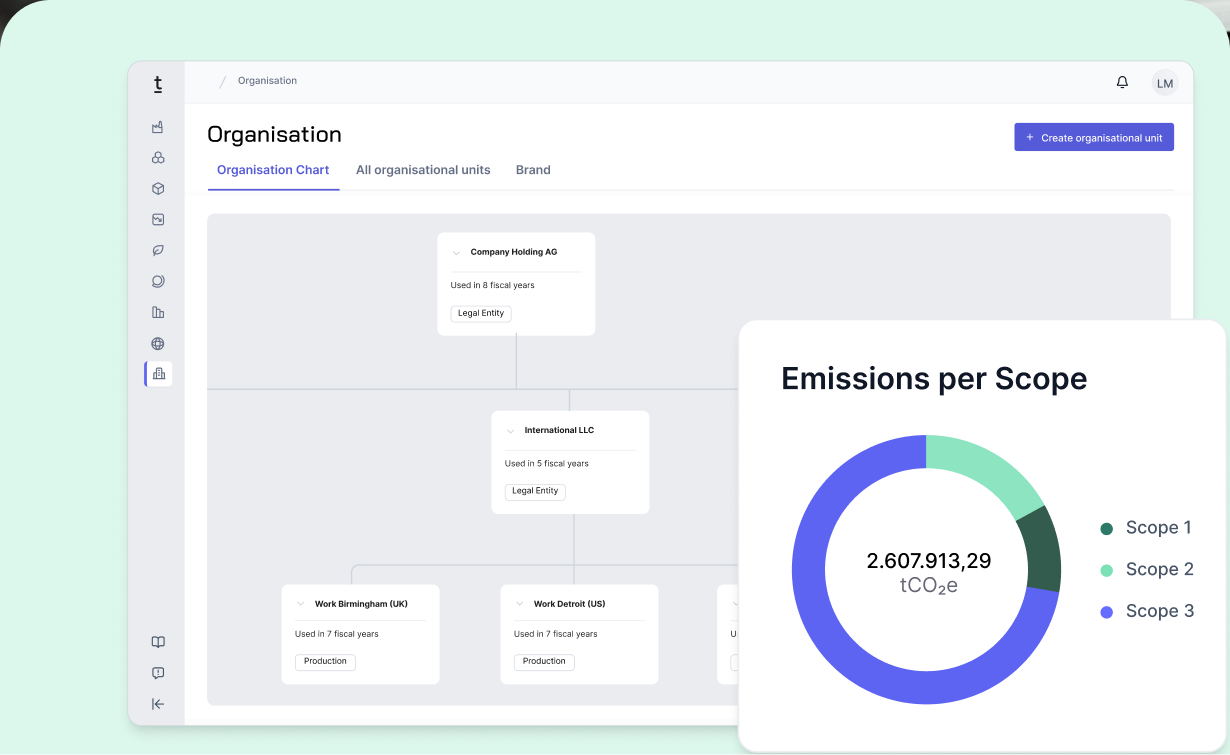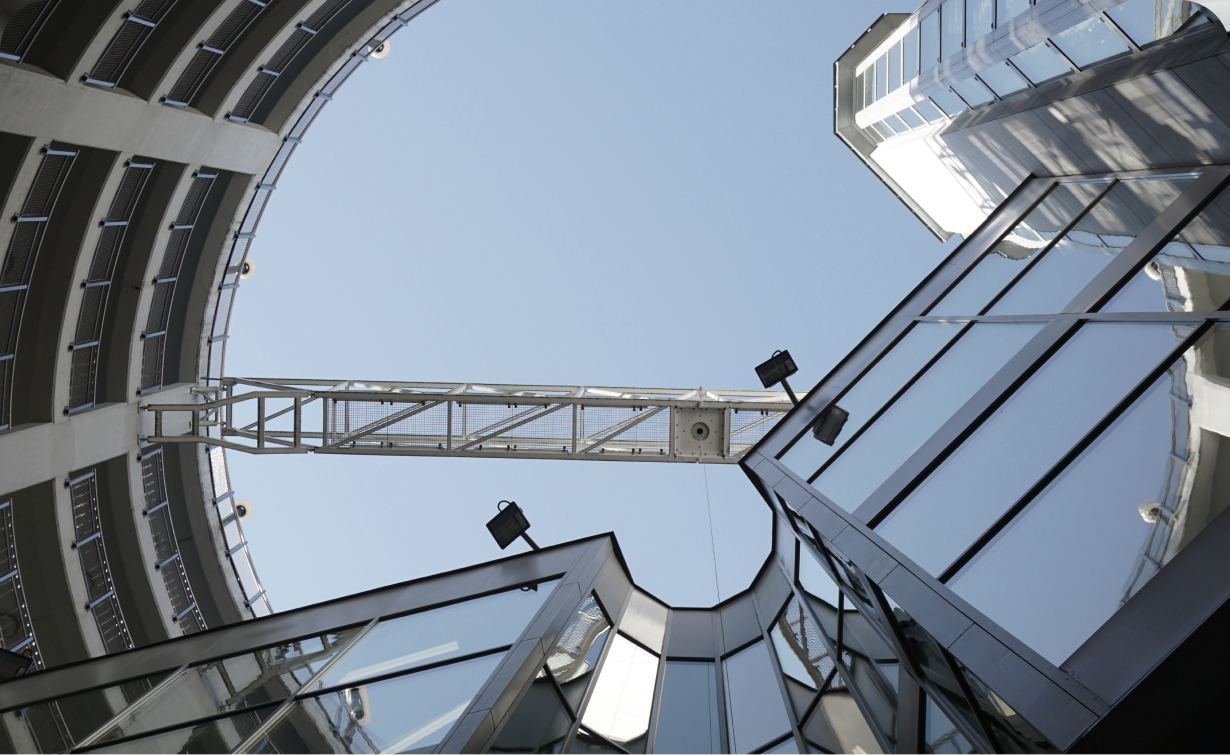Reducing Scope 3 emissions through Circular Economy

While Scope 1 and Scope 2 emissions – i.e. direct and energy-related emissions – are still relatively easy to influence, Scope 3 emissions often make up the largest share of a company’s carbon footprint. Scope 3 includes a wide range of indirect sources and often accounts for 75–90% of total emissions (see graphic 1): from purchased goods and services to transportation, product use, and end-of-life disposal.
The circular economy offers transformative levers to significantly reduce these emissions through a more resource-efficient, closed-loop approach.

Understanding Scope 3
According to the Greenhouse Gas Protocol, Scope 3 emissions are divided into 15 categories (see also Tanso blog article Scope 3 Emissions: Categories & Best Practices). Simplified, these can also be grouped into upstream and downstream activities.
Here’s an overview of the most relevant categories:
Upstream Perspective – Supplier Side – Upstream Activities
- Purchased goods and services (Category 3.1):
These emissions occur upstream – during the production of materials or services that companies purchase. They are often estimated using spend-based or quantity-based methods, as detailed, supplier-specific data is frequently lacking.
Example: raw material production, supply chain - Capital goods (Category 3.2):
These emissions arise during the manufacturing and transport of long-term assets such as machinery, equipment, or buildings.
Example: factory facilities - Waste generated in operations (Category 3.5):
These emissions result from the disposal and treatment of waste generated upstream, which is processed not within the company itself but by external facilities. This includes, for example, recycling or landfill processes.
Downstream Perspective – Demand Side – Downstream Activities
- Processing of sold products (Category 3.10):
Emissions generated when products are further processed by customers — for example, when a sold product undergoes additional production steps, customer-specific processing, or is integrated into other products. - Use of sold products (Category 3.11):
These emissions occur during the use phase of the product, including direct energy consumption. Machinery, vehicles, industrial equipment, electronics, and even household appliances can contribute significantly — especially when they are not energy efficient or are designed for short lifespans. - End-of-life treatment of sold products (Category 3.12):
Emissions are not limited to production or use. The downstream phase also includes disposal, recycling, or other waste treatment of products after their useful life has ended.
Regulatory frameworks are increasingly requiring transparent emissions reporting (e.g. Corporate Sustainability Reporting Directive) with a focus on the full scope of a company’s carbon footprint. Many organizations are aligning themselves with science-based reduction targets (e.g. SBTi).
Scope 3 emissions cover the entire value chain. This means that companies need to adopt a mindset that takes the entire product lifecycle into account.
The circular economy embodies exactly this holistic perspective. Effective decarbonization requires a systemic approach that leverages circular strategies.
Putting circular economy levers into action
At its core, the circular economy rethinks products and business models with a focus on resource productivity. Design, production processes, and consumption patterns are all optimized to be resource-efficient. This includes the efficient use of products, high-quality recovery of materials, the minimization or even elimination of waste, and the regeneration of natural systems. Companies that successfully implement circular business models not only reduce their carbon footprint but also gain a competitive advantage, for example, through cost savings, new revenue opportunities, or more resilient supply chains. The shift is away from the linear "take-make-waste" model toward closed-loop systems. This paradigm goes beyond simply avoiding waste or promoting recycling; it’s about fundamentally redesigning processes to unlock long-term, system-wide ecological benefits - especially around Scope 3 emissions - while building economic value in the process.
Circular procurement
Shifting suppliers toward circular practices can significantly reduce upstream CO₂ emissions. Companies can integrate circular design criteria into their tenders and supplier evaluations. Key performance indicators could include targets for material efficiency or the share of recycled content. This means setting clear requirements at the product or supplier level to help meet CO₂ reduction goals. Preferencing suppliers that use recycled or bio-based materials also directly reduces the extraction of virgin resources and the associated emissions. This has a direct impact on emissions from purchased goods (Category 3.1).
Active supplier engagement and capability building are often crucial. Direct collaboration with key suppliers helps close data gaps and enables further emission reductions. Training suppliers on circular design principles – such as modularity or biodegradability – empowers them to innovate and lower their carbon intensity. This creates a supply chain effect: when suppliers reduce their own Scope 1 and Scope 2 emissions, the Scope 3 footprint of their customers also decreases.
Improved material selection and product efficiency
Improvements in product design are essential to reduce both upstream and downstream emissions during the usage phase. “Lightweighting” – replacing heavy materials with lighter alternatives – not only reduces embedded emissions, but also lowers the energy consumption during use, particularly in the use phase of sold products (Category 3.11).
Design optimization for disassembly, modularity, and repairability
Products that are easy to disassemble enable repair, refurbishment, or remanufacturing. In practice, circular design guides often play a key role by shaping product development processes and defining technical specifications. By adjusting procurement strategies to prioritize suppliers offering circular design, companies also send a strong market signal for the shift toward a carbon-efficient supply chain. This, as described, optimizes embedded emissions in category 3.10, and also impacts the use phase (category 3.11) and end-of-life treatment (category 3.12) of sold products.
Energy efficiency and integration of renewable energy
Products that consume less energy or are designed to operate with renewable energy sources inherently have a better carbon footprint (category 3.11). Examples include energy-efficient household appliances, smart electronics that adapt to usage patterns, or electric vehicles powered by clean energy. Modular design not only extends product lifespans, but also allows for easy upgrades with the latest energy-saving technologies.
Reuse and recycling
At the end of the product lifecycle, a circular approach ensures materials are returned to new production cycles. Simple levers include reusable packaging: standardized, durable containers that can be returned and refilled help minimize waste (category 3.5). Specialized recycling processes can also recover valuable materials, reducing the need for virgin raw materials. Recycled materials typically have a lower carbon footprint and contribute to a more resilient supply chain by reducing dependency on price volatility and diversifying sourcing streams. Strategies such as refurbishment, remanufacturing, and reuse at end-of-life ensure fewer resources are lost and help to sustainably minimize emissions in category 3.12 over the long term.
Product-as-a-Service and resale models
Business models that shift the focus from ownership to providing products as a service can also support decarbonization. By maintaining control over the entire product lifecycle — from design and production to use and return — companies can manage Scope 3 emissions much more effectively. Similarly, resale models (such as second-hand or what’s often called “recommerce”) help reduce the exclusive sale of new products and actively support reuse cycles. Used and refurbished products become part of the company’s offering — and in practice, often open up access to new customer segments. When designed well, both models increase product utilization over its full lifetime and create more value with fewer products (e.g. car sharing instead of individual car ownership).
Getting started with Circular Economy
Decarbonizing Scope 3 emissions through circular strategies is a complex but highly effective approach. The journey often begins with strong supplier engagement and an adapted procurement strategy, and continues through innovative product design. Design is a fundamental lever for end-to-end optimization — and already in the early design phase, efficient resource management at the product’s end of life should be taken into account. Companies that adopt circular approaches can effectively reduce their carbon footprint, strengthen the resilience of their supply chains, and unlock new business opportunities — while also meeting regulatory requirements. For many organizations, the shift from a linear to a circular business and operating model is becoming a strategic necessity. However, turning this ambition into real business outcomes is anything but easy. Too often, promising initiatives stall, lose momentum, and ultimately fail. Not because the ideas are weak or the ambition is lacking — but because the organization isn’t sufficiently prepared. Structures, incentives, and leadership alignment often lag behind the vision. The result? Circular programs that never reach their full potential.
Circularity Pulse Check
A simple readiness scan that helps you assess where you stand, whether you're just starting to explore the circular economy or already in the middle of your transformation. The main goal is to create transparency and enable learning from best practices. The Circularity Readiness Scan is a simple, survey-based tool that helps you understand your current position and identify areas for improvement. It provides a clear picture of the key levers for successful transformation — from potential pilot projects to deep integration into your organization.
- Identify development areas before they become roadblocks
- Create clarity on priorities across teams and leadership
- Understand what’s working — and what’s still missing
- Learn from best practices in an easy-to-use format
- Align your team and define clear next steps
Access the Circularity Readiness Scan – IMD Business School
The app was developed by IMD Lausanne: a renowned international business school specializing in executive education.
You can use the tool directly via mobile phone or browser. No personal data is stored. Use of the tool is free of charge for individuals.

Prof. Dr. Julia Binder, Professor of Sustainable Innovation and Business Transformation at IMD Lausanne, and Dr. Manuel Braun, expert in the field of circular economy and lecturer at the Technical University of Munich, have co-authored the book “The Circular Business Revolution”, developed the Circular Readiness Scan, and offer the „IMD Creating Value in the Circular Economy Program“ in Lausanne.













































.avif)







.jpg)
.jpg)




















-p-800.webp.avif)
-min-p-800.webp.avif)






-p-800.webp.avif)

